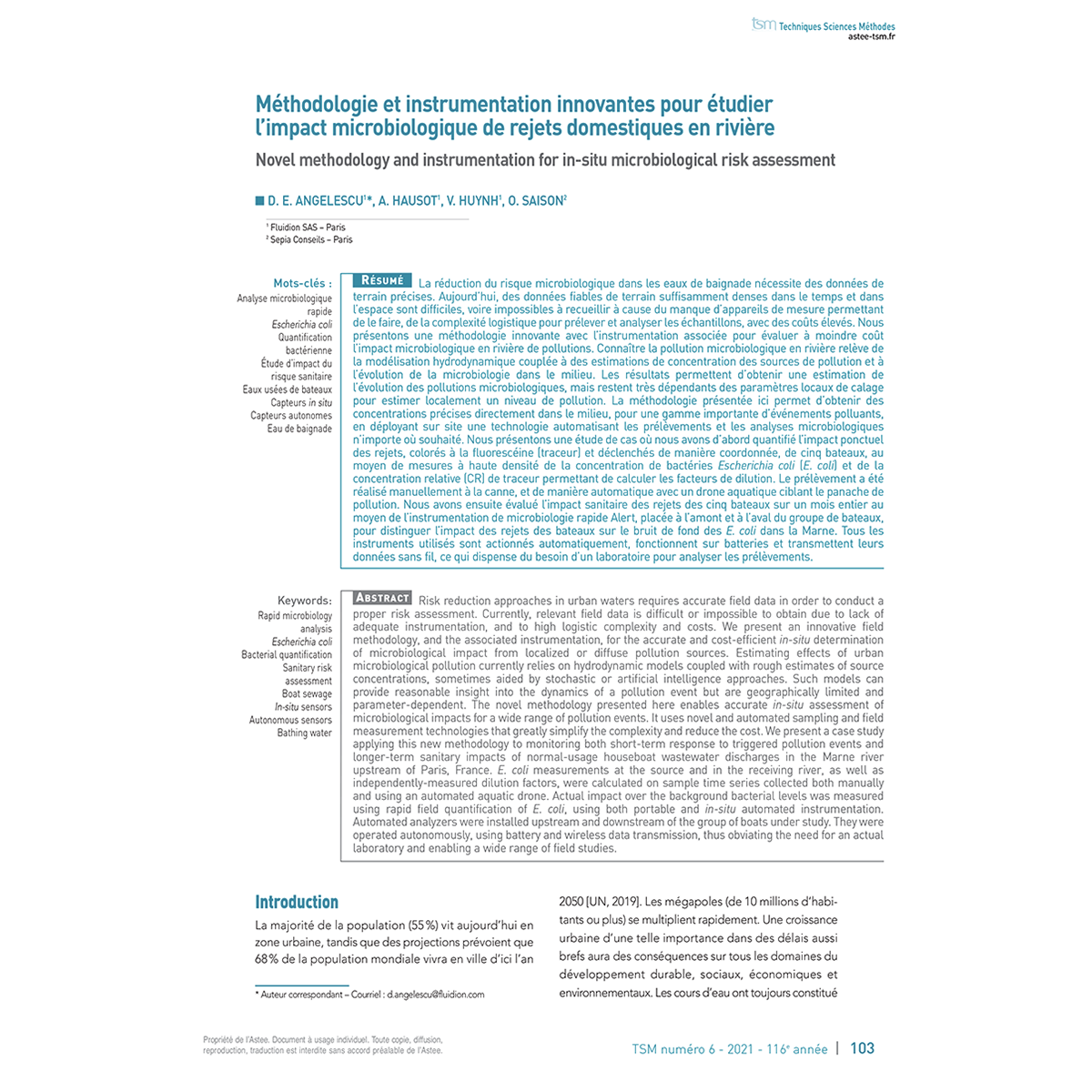
Novel methodology and instrumentation for in-situ microbiological risk assessment
TSM - Techniques Sciences Méthodes article "Novel methodology and instrumentation for in-situ microbiological risk assessment", N°. 6 VOL. 116 (2021)

TECHNIQUES SCIENCES MÉTHODES (TSM): NOVEL METHODOLOGY AND INSTRUMENTATION FOR IN-SITU MICROBIOLOGICAL RISK ASSESSMENT (2021)
The article "Novel methodology and instrumentation for in-situ microbiological risk assessment", was recently published in TSM - Techniques Sciences Méthodes No. 6 Vol. 116, 2021. It addresses the issue of measuring the environmental impacts of live-in boat wastewater on the receiving watercourse. A real challenge and a unique study, using Fluidion ALERT microbiological analyzers and sampling with the Fluidion Drone.
This work was also presented in English at the 2021 Unesco Second International Conference "Water, Megacities and Global Change". To request a copy, contact us.
Automated measurement and tracking of the pollution impact of domestic, urban and natural sources on a river ecosystem
Key points:
- The methodology presented is based on a combination of fluorescent wastewater tracking, rapid microbiological measurements with ALERT technology, and automated sampling with Fluidion's aquatic drone to provide a rapid, accurate and affordable in-situ microbiological assessment of pollution sources on river ecosystems.
- Phase 1 of the study showed that there is considerable variability in E.coli concentrations in graywater discharged from houseboats. These can vary by a factor of 10⁵. Wastewater shows high concentrations with low variability (within a factor of 10).
- Phase 2 of the study demonstrated that the methodology employed allows for the rapid identification and accurate measurement of the impact of a discrete pollution event at multiple points in the river.
- In Phase 3, a total of 182 E.coli measurements were taken over the course of one month, with an average of 6 daily measurements. The data collected showed the positive impact of rainfall events on the increase in E.coli concentrations, and also that the concentrations measured upstream and downstream followed the same trends without significant deviation.

